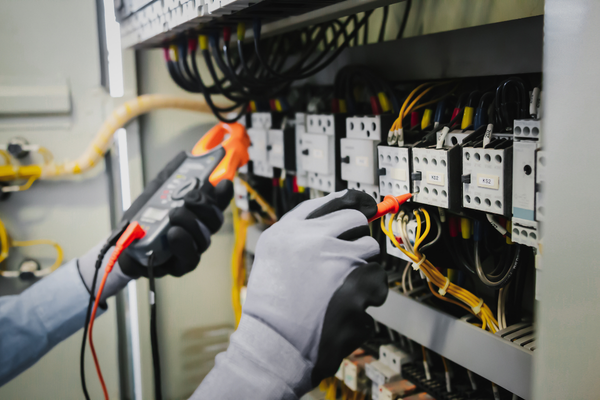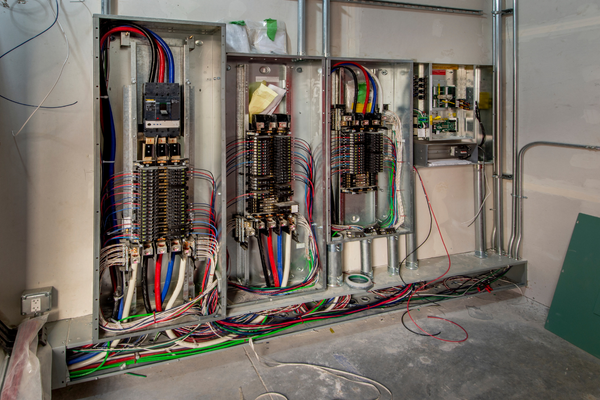North East Ohio Electrical Solutions:
Electrical Installation Garfield Heights, OH
Powering Homes and Businesses with Safe, Efficient Installations
Professional Electrical Installation Services
When electricity needs proper setup in homes and businesses, Atomic Electric & Generators Inc. stands ready to help. The company has served Garfield Heights and surrounding areas with quality electrical installation service for many years. Every project gets careful attention to safety rules and local codes. Electrical work requires skill and knowledge. Bad wiring can cause fires, shocks, or power problems. Licensed electricians know how to install systems the right way. They follow Ohio's electrical rules and get permits when needed. Safety always comes first in electrical projects.
What Is Electrical Installation?
Electrical installation means putting in new wiring, outlets, lights, and electrical equipment. This work includes running wires through walls, connecting circuits, and setting up electrical panels. Electrical installation services cover both simple jobs like adding outlets and big projects like wiring whole buildings.
The process starts with planning. Electricians look at the space and figure out what electrical needs exist. They draw plans showing where wires, outlets, and switches will go. Then they get permits from local offices. After approval, the real work begins.
Installing electricity happens in steps. First comes “rough-in” work. This means running wires through walls before they get covered up. Next, electricians install the main electrical panel and connect everything. Last, they put in outlets, switches, and light fixtures. Each step gets checked to make sure it meets safety rules.

Types of Electrical Installation Services We Provide
Atomic Electric & Generators Inc. handles many kinds of electrical installation projects:
Residential Electrical Installation
- New outlet installation and placement
- Light fixture installation and wiring
- Electrical panel upgrades and replacements
- Whole-house rewiring projects
- Ceiling fan installation and setup
- Kitchen and bathroom electrical work
- Basement and attic wiring projects
Commercial Electrical Installation Services
- Office building electrical systems
- Retail store lighting and power
- Restaurant kitchen electrical work
- Warehouse and industrial wiring
- Security system electrical connections
- Emergency lighting installation
Specialty Electrical Services
- Generator installation and repair work for backup power
- Electric vehicle charger setup at homes and businesses
- Electrical panel changes and upgrades for better power
- Code violation corrections to meet safety rules
Common Electrical Installation Projects in Garfield Heights
Homes and businesses in Garfield Heights often need similar electrical installation services. Understanding common projects helps customers plan their own electrical work.
- Kitchen Remodeling Electrical Work Kitchens use lots of electricity. Modern kitchens need outlets for appliances, under-cabinet lighting, and dedicated circuits for big equipment like dishwashers and garbage disposals. Old houses often don’t have enough kitchen power for today’s needs.
Electrical installation for kitchen remodels involves adding circuits, installing GFCI outlets, and upgrading electrical panels. Good planning puts outlets in convenient places and provides enough power for all appliances.
- Bathroom Electrical Updates Bathrooms need special electrical attention because water and electricity don’t mix safely. GFCI outlets prevent shocks in wet areas. Exhaust fans remove moisture that can damage wiring. Good lighting makes bathrooms safer and more comfortable.
Modern bathroom electrical installation includes GFCI outlets, proper ventilation, and adequate lighting. Some bathrooms also need outlets for electric toothbrushes, hair dryers, and other personal care items.
- Basement and Garage Wiring Many Garfield Heights homes have unfinished basements or garages with minimal electrical service. Converting these spaces for workshops, home offices, or recreation rooms requires new electrical installation.
Basement and garage electrical work often involves running new circuits from the main panel. These areas might need additional outlets, better lighting, and dedicated circuits for power tools or equipment.
- Whole-House Electrical Upgrades Older homes sometimes need complete electrical updates. Old wiring might use outdated materials or not provide enough power for modern living. Whole-house rewiring is a big project but makes homes much safer.
Complete electrical installation projects involve replacing old wiring, upgrading electrical panels, and adding modern safety features. This work takes time but greatly improves safety and functionality.
Getting Started with Your Electrical Installation Project
Planning electrical installation work starts with understanding your needs and budget. Think about how you use electricity and what improvements would help most.
Identify Your Electrical Needs Walk through your home or business and look for electrical problems. Do you have enough outlets? Are lights bright enough? Does the electrical panel have space for new circuits? Do outlets work properly?
Make a list of electrical improvements you want. Prioritize them by importance and safety. Some electrical problems need immediate attention, while others can wait for convenient timing.
Set a Realistic Budget Electrical installation costs vary depending on project complexity. Simple jobs like adding outlets cost less than rewiring whole buildings. Get quotes from contractors to understand realistic costs for your projects.
Remember that electrical installation is an investment. Good work increases property value and improves safety. Don’t sacrifice quality to save a little money.
Schedule Consultation Contact Atomic Electric & Generators Inc. to discuss your electrical installation needs. Experienced electricians can evaluate your situation and recommend solutions. They answer questions and provide honest quotes for work.
Early consultation helps avoid problems and delays. Professional advice saves money by identifying the most effective solutions for electrical needs.

Why Choose Atomic Electric?
Many people think electrical work looks easy. They see electricians connect wires and flip switches. But electrical installation involves complex knowledge about codes, safety, and proper techniques. DIY electrical work often leads to problems.
Professional electricians understand Ohio’s electrical rules. These rules exist to keep people safe. The Ohio Electrical Code comes from national safety standards. It tells electricians how to install wiring, what materials to use, and where to put safety devices like GFCI outlets.
Licensed electrical installation contractors carry insurance. If something goes wrong during installation, insurance covers the damage. Homeowners who do their own electrical work don’t have this protection. One mistake could cost thousands in repairs or cause injury.
Proper electrical installation also helps homes and businesses pass inspections. When selling a property, buyers often hire inspectors to check the electrical system. Good installation work passes these inspections easily. Poor wiring can kill a sale or force expensive repairs.
Hear what our clients had to say.
EXCELLENTTrustindex verifies that the original source of the review is Google. Reliable and skilled.Trustindex verifies that the original source of the review is Google. Ted did great work, and finished in record time! I will definitely be calling him for all my electrical work from now on.Trustindex verifies that the original source of the review is Google. Responsive, professional and fair.Trustindex verifies that the original source of the review is Google. Ted is the best! He was able to come out and run a new line we needed installed to make a remodel work quickly and best of all he was very courteous and professional when he came by. Also did the work much quicker than I expected!Trustindex verifies that the original source of the review is Google. Very very pleased with the work and was done quick. Very close to home. And a very nice guy. Use these guys their the best. !!Trustindex verifies that the original source of the review is Google. Ted was on time and very professional. Honest, clean work at a great price. Will definitely call in again for future electrical projects.Trustindex verifies that the original source of the review is Google. Ted was a pleasure to work with.Trustindex verifies that the original source of the review is Google. Called Ted @ Atomic Electric & Generators to get an estimate for wiring and commissioning our stand-by generator. He promptly came to look at the job and then got us a quote asap. He told us when he could do the job and how long he thought it would take to complete it. With a simple handshake, we agreed on the price and the days (which were a Monday & Tuesday). He called on Saturday to make sure everything was still a "go" for that Monday & Tuesday. Told us he would be here at 9:00 a.m. He was as good as his word and was here both days at 9:00 a.m. He did a great job and it was a pleasure having him work for us. We will definitely call him for any other jobs we have.Trustindex verifies that the original source of the review is Google. A great guy who does honest electrical work. Helped us out numerous times, and rather quickly. (Never fun to be stuck in the dark for too long) Always gets the job done, never has let us down.
Safety and Code Compliance
Electrical installation work must follow strict safety rules. These rules exist because electricity can cause fires, shocks, and death. Professional electricians understand these dangers and know how to work safely.
Ohio Electrical Code Requirements The Ohio Electrical Code tells electricians how to do installation work safely. This code covers wire types, installation methods, and safety devices. Following the code isn’t just smart – it’s required by law.
Some key code requirements include:
- GFCI protection in bathrooms, kitchens, and outdoor areas
- Proper grounding of all electrical systems
- Correct wire sizes for different electrical loads
- Safe spacing of outlets and switches
- Proper installation of electrical panels and connections
Safety During Installation Electrical installation contractors take safety seriously. They turn off power before working on circuits. They use proper tools and safety equipment. They test wiring before connecting power.
Safety training teaches electricians to identify dangerous situations. Old wiring might contain asbestos. Wet conditions create shock hazards. Overloaded circuits can start fires. Trained electricians know how to handle these risks.


